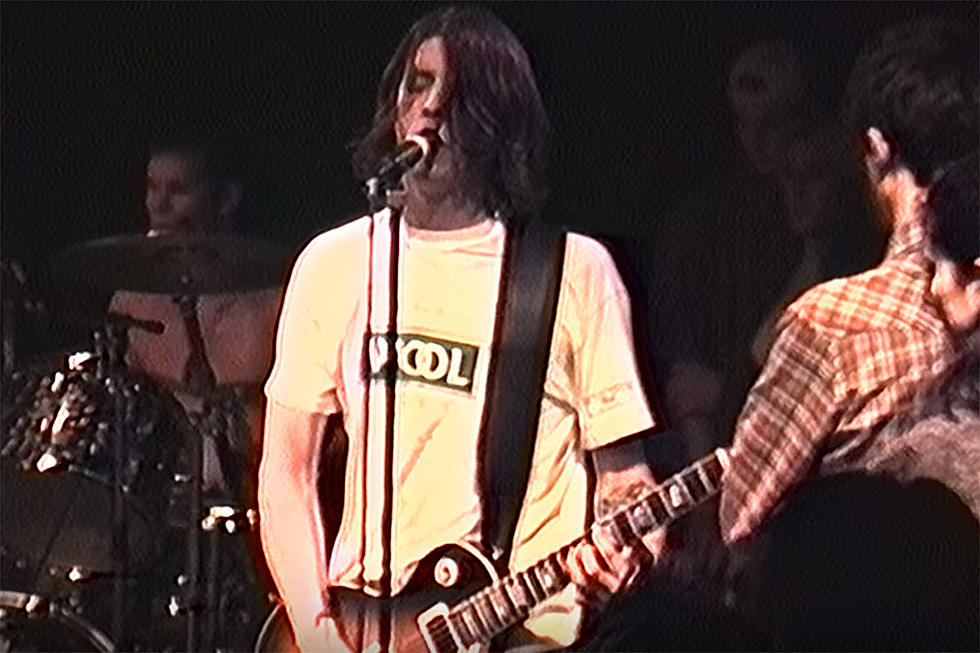20 Years Ago: Foo Fighters Conquer the Post-Grunge World With ‘The Colour and the Shape’
The runaway success of the Foo Fighters’ self-titled 1995 debut was certainly the catalyst that brought Dave Grohl out from behind the drums after the abrupt end of Nirvana. But it was their second album, The Colour and the Shape, that cemented his status as a dominant rock force on his own.
And, like so many classic albums before it, The Colour and the Shape came out of heartache. Released in May 1997, the album was inspired by Grohl’s divorce the year before from photographer Jennifer Youngblood. You can see it right down to the track listing, which he arranged to mirror the range of emotions experienced during a therapy session. But as the ubiquitous popularity of songs like “Everlong” and “My Hero” suggest, there was something about the album that was universally therapeutic.
The album represented raised stakes for Grohl on multiple levels. The Foo Fighters' self-titled debut was essentially a solo record, written and recorded almost exclusively by Grohl with the help of producer and friend Barrett Jones. Once that album became a sensation, Grohl assembled a real band to tour behind it. He brought on Pat Smear, his touring bandmate in Nirvana during the final months of the band, and recruited the rhythm section from Seattle emo outfit Sunny Day Real Estate: bassist Nate Mendel and drummer William Goldsmith.
For Grohl, returning to the studio to record The Colour and the Shape was also his return to writing and collaborating within a group. He tapped producer Gil Norton (Pixies, Belly), hoping the veteran could help take the songs to the next level and add a slick, pop veneer.
But the recording sessions were anything but smooth. Tracking began in November 1996 at Bear Creek Studios in Woodinville, Wash., but Grohl left dissatisfied, scrapping all of the material crafted there. For the second round, Grohl and the band (minus Goldsmith) reconvened the following February at Hollywood's Grandmaster Recorders. Amid rising budgets and mounting labeling pressures, Grohl opted to track much of the drum parts himself and that decision, in part, prompted Goldsmith to walk out mid-production.
Taylor Hawkins, who had previous been the drummer in Alanis Morissette's band, replaced Goldsmith for Foo's final recording push. Hawkins contributed to “See You,” “February Stars" and "Walking After You."
Watch the Video for "Walking After You"
And it wasn’t just the lineup that changed: Grohl had also significantly raised his lyrical game. He uses the songs as a means of emotional catharsis and, at times, he does it in a specific and personal way. The approach was in stark contrast to the first Foo Fighters album, which Grohl later said was mostly random gibberish he often wrote right before recording, in the dark period after Kurt Cobain's death.
But on Colour, Grohl takes us on emotional journey through the pain of his divorce (with lyrics that make actual sense) while sharing his views on other topics like the media (“Wind Up”), his favorite movie Arizona Dream (“Enough Space”) and the importance of everyday rock stars (“My Hero”). The album follows a clear thematic arc, too, beginning with the uncertainty of “Doll” and ending with the resolute conclusion and personal growth of “New Way Home.”
And the music is no less compelling than the lyrics. Lead single “Monkey Wrench” remains one of the best examples of what the Foo Fighters can achieve when they get their rock on, floating a memorable pop hook over hyperkinetic rhythms and a wall of thick, ratchet-tight guitars. In fact there are multiple occasions where the riffs do the talking at key moments, like the rapid-fire intro to “Monkey Wrench,” or the clean picking of “Everlong,” or the dramatic build-up to “My Hero.” It’s that commitment to composition that makes the album still relevant today, long after the era of Three Doors Down and Puddle of Mudd faded into obscurity.
Watch the Video for "Monkey Wrench"
The Colour and the Shape received a Grammy nomination for Best Rock Album and three singles (“Monkey Wrench,” “Everlong” and “My Hero”) charted in Billboard's Top 10. And, after six more albums, it remains the best-selling full-length of Foo Fighters' career.
But perhaps more importantly, the album proved to skeptics that Foo Fighters were far more than the new band of the guy who used to drum in Nirvana, and separated themselves from the third-wave post-grunge imposters that emerged around him. The Colour and the Shape was Grohl's formal introduction to the world, and he used it to boldly proclaim that Foo Fighters were, indeed, for real.
Foo Fighters Albums Ranked in Order of Awesomeness
More From Diffuser.fm









